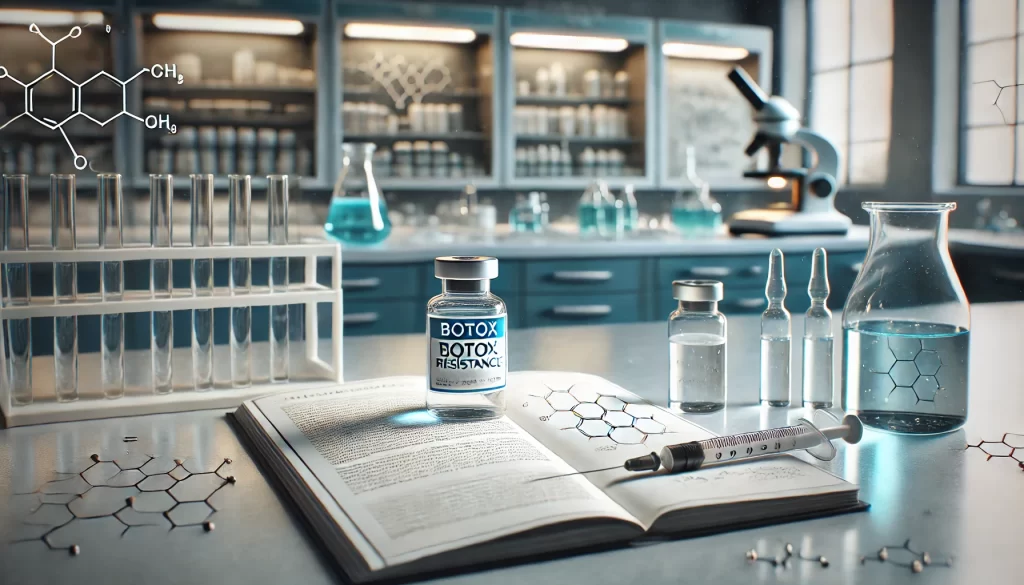Botox Resistance: Botox treatments are highly popular for both cosmetic enhancements and medical conditions. Whether reducing facial wrinkles or treating neuromuscular disorders, Botox provides reliable results. However, a growing number of patients report experiencing decreased effectiveness over time—a phenomenon scientifically termed Botox Resistance. This article will delve deeply into Botox Resistance, exploring why it happens, how to recognize it, and the best practices to manage it.
What Exactly is Botox Resistance?
Botox Resistance occurs when the body’s immune system begins to recognize botulinum toxin as a foreign substance, resulting in the production of neutralizing antibodies. These antibodies reduce or entirely eliminate Botox’s ability to relax targeted muscles. This condition is becoming increasingly significant in dermatological and aesthetic medicine.
Why Does Botox Resistance Occur?
Research highlights several key reasons contributing to Botox Resistance, including:
- Frequent Injections: Regular treatments administered less than every three months significantly increase antibody formation risk.
- High Cumulative Doses: Continuous exposure to elevated doses can prompt immune recognition and response.
- Formulation Differences: Certain Botox preparations containing higher amounts of inactive proteins may trigger heightened immune reactions.
- Recent Infections: Viral or bacterial infections can activate the immune system, facilitating antibody formation.
- Prolonged Antibiotic Use: Extended use of antibiotics or immunomodulators can predispose individuals to develop resistance.
Awareness of these factors can help both patients and professionals minimize the risk of developing Botox Resistance.
Recognizing Signs of Botox Resistance
Early identification of Botox Resistance is crucial. Common indicators include:
- Gradually reduced duration of Botox effectiveness after each session.
- Absence of expected results despite correct dosage and proper injection techniques.
- Premature return of muscle movements within less than two months post-treatment.
Recognizing these signs early ensures timely intervention and prevents unnecessary repeated injections.
Managing Botox Resistance Effectively
If Botox Resistance is suspected, immediate steps should be taken to manage the condition:
Take a Break from Botox
A break of at least six months from Botox treatments helps reduce antibody levels, enhancing future Botox efficacy.
Alternative Cosmetic Treatments
Investing in alternative treatments during the Botox hiatus can maintain aesthetic results and enhance skin health. Effective alternatives include:
- Microneedling: Stimulates collagen production and revitalizes skin texture.
- Ultrasound Therapy (Ultraformer): Encourages skin tightening and lifting without triggering immune responses.
- Chemical or Physical Peels: These exfoliate and rejuvenate the skin, providing smoother texture and complexion.
- Fractional Laser Treatments: Offers targeted skin renewal and improved skin elasticity.
These alternative methods provide considerable rejuvenation benefits without exacerbating Botox Resistance.
Strengthen Your Skincare Routine
Daily skincare routines enriched with sun protection, antioxidants, and retinoids help sustain and prolong aesthetic benefits during Botox-free intervals. Robust skincare practices significantly complement overall treatment strategies, reducing dependency on frequent Botox injections.
Preventing Botox Resistance
Prevention remains the best strategy. Adhering to recommended Botox protocols can substantially decrease the risk of developing resistance:
- Maintain a minimum interval of three months between Botox injections.
- Utilize minimal effective doses rather than excessive applications.
- Ensure injections are performed by certified professionals trained in accurate dosing techniques.
Following these guidelines proactively minimizes the risk of Botox Resistance.
The Impact of Botox Resistance on Long-term Aesthetics
Unchecked Botox Resistance can significantly alter aesthetic outcomes, compromising patient satisfaction and treatment success. Continuous monitoring, appropriate intervals between treatments, and timely professional consultations ensure sustained Botox efficacy and enhanced patient experiences.
Advanced Diagnostic Approaches
Diagnostic testing for antibody presence can confirm Botox Resistance clinically. Tests like ELISA (enzyme-linked immunosorbent assay) detect neutralizing antibodies in the bloodstream, providing definitive confirmation and guiding subsequent therapeutic strategies.
Scientific Studies on Botox Resistance
Numerous scientific studies underscore the clinical relevance of Botox Resistance. According to recent dermatological research, approximately 1-3% of patients treated regularly with Botox might develop resistance due to antibody production, reinforcing the importance of preventive measures and informed treatment choices.
Treatment Innovations on the Horizon
Medical advancements promise exciting alternatives for managing Botox Resistance. Researchers are exploring formulations with lower immunogenic profiles, potentially reducing antibody production. Staying informed on these developments can significantly impact treatment approaches and patient outcomes in future dermatological practices.

Professional Recommendations for Botox Resistance
Always consult qualified aesthetic professionals for personalized recommendations regarding Botox treatments. These specialists can tailor injection protocols, suggest optimal intervals, and recommend suitable complementary therapies to avoid or overcome Botox Resistance effectively.
Botox Resistance: Final Thoughts
Though rare, Botox Resistance remains a critical consideration for patients and practitioners alike. Recognizing early symptoms, managing treatment intervals, exploring alternative rejuvenation methods, and maintaining robust skincare routines can significantly mitigate its impacts. Always consult qualified healthcare providers to individualize treatment plans and maintain optimal, long-lasting results.
FAQ – Frequently Asked Questions about Botox Resistance
How common is Botox Resistance?
It’s relatively uncommon, affecting around 1-3% of regular Botox users.
Can Botox Resistance be reversed?
Yes, by ceasing Botox injections for several months, antibody levels can diminish, restoring efficacy in subsequent treatments.
Are there tests for Botox Resistance?
Yes, antibody testing (ELISA) can clinically confirm resistance.
Are some Botox brands less likely to cause resistance?
Brands with fewer inactive proteins might carry a lower risk of resistance.
By staying informed and proactive, you can continue enjoying the excellent benefits of Botox treatments while effectively managing or preventing Botox Resistance.

At Best and Beyond Spa, Day and Davilla are dedicated professionals passionate about wellness and beauty. With expertise in spa day treatments, couples massages, and senior wellness, they provide high-quality, personalized care in a relaxing environment. Their mission is to help clients feel rejuvenated, refreshed, and truly cared for.









